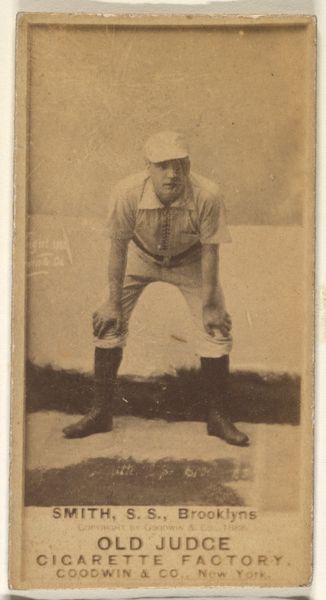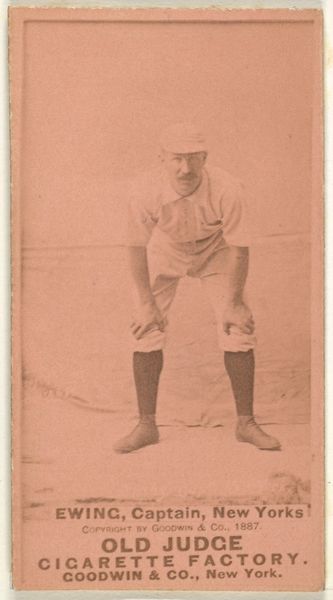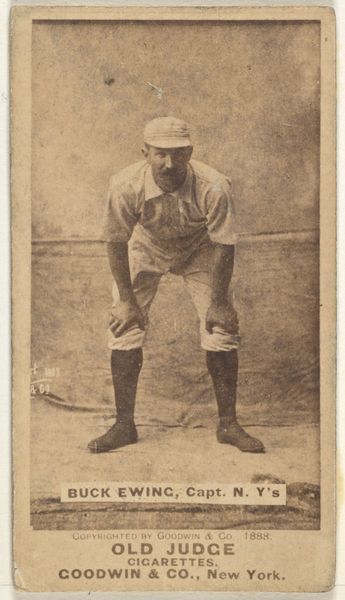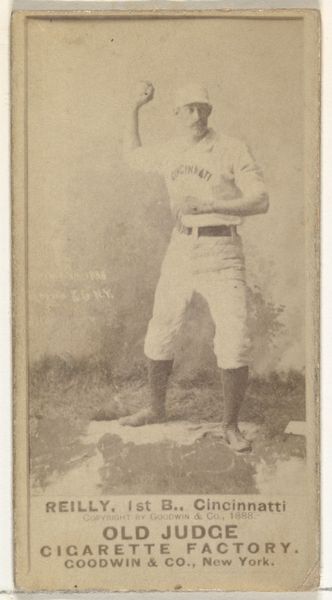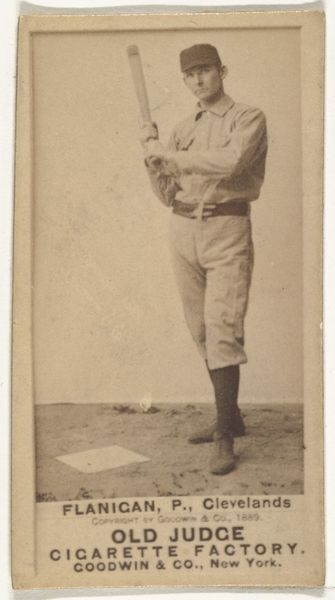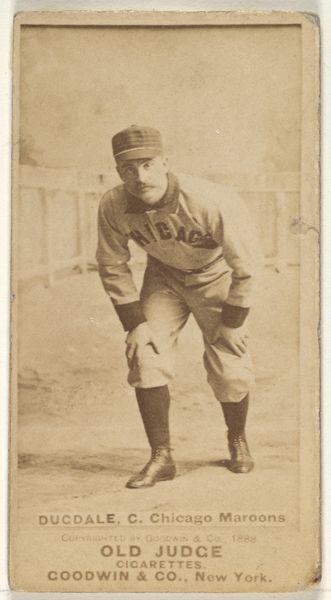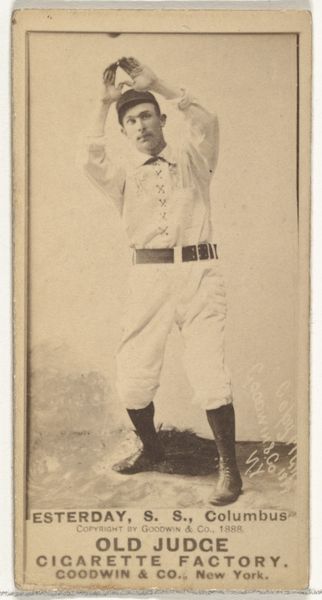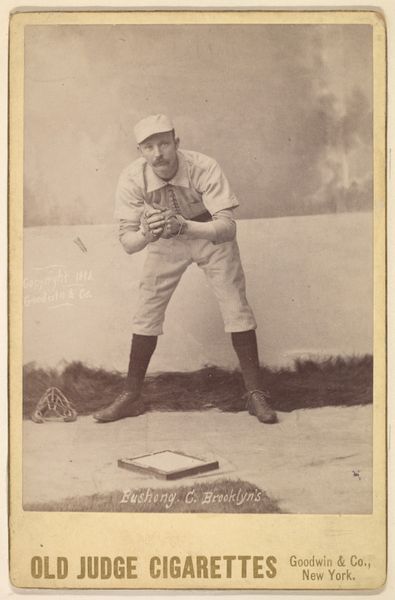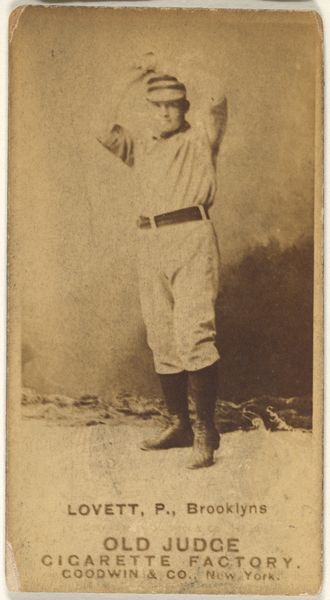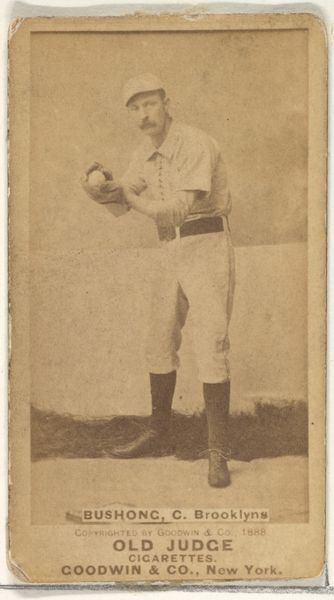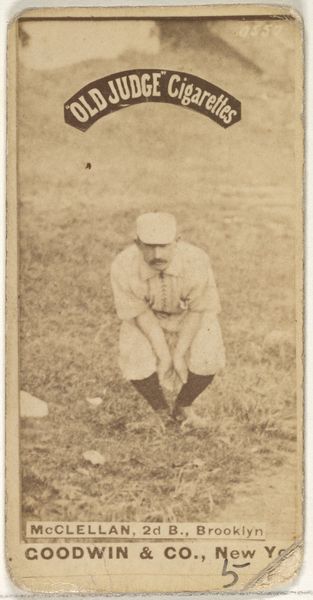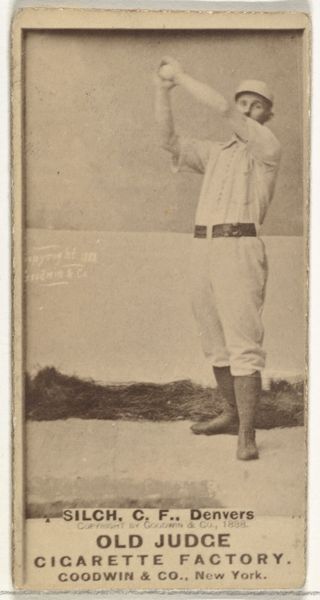
Smith, Shortstop, Brooklyn, from the series Old Judge Cigarettes 1888
0:00
0:00
print, photography, albumen-print
#
portrait
# print
#
baseball
#
figuration
#
photography
#
historical photography
#
genre-painting
#
albumen-print
Dimensions: sheet: 6 1/2 x 4 3/8 in. (16.5 x 11.1 cm)
Copyright: Public Domain
Curator: Here we have an albumen print titled "Smith, Shortstop, Brooklyn, from the series Old Judge Cigarettes" made in 1888 by Goodwin & Company. It's a baseball trading card now residing at the Metropolitan Museum of Art. Editor: It’s surprisingly stark, almost like a posed snapshot. The player is set against a bleached-out background, with hands on his knees and staring straight ahead. It's not the dynamic action shot you might expect from a sporting image. Curator: These cards were hugely popular, bound to cigarette packs. Think about it—tobacco companies commodifying sport, building celebrity around these early players. The Old Judge series really captured a moment when baseball was solidifying its place in American culture. Editor: Absolutely, and what strikes me is the materiality of the image itself. Albumen prints like this were created through a painstaking chemical process using egg whites! It links high-production manufacturing with this almost craft-based approach, quite different from today’s mass-produced trading cards. There's something very fragile about it too. Curator: Precisely. And the albumen printing process lends this beautiful sepia tone to the photograph which adds a historical and romantic effect. Think about its wider impact—mass production made these players accessible as icons. It helped transform baseball from a pastime to a commercially viable spectacle. Editor: Right, you can also consider how staged it seems to be in order to look informal; not a real game setting. I'm drawn to his uniform – the fabric, the buttons, the weight of those knee-high socks. These cards speak volumes about early sportswear manufacturing, material limitations, and the way players presented themselves. Curator: Absolutely. It's more than just a portrait; it’s a symbol of burgeoning commercialization and baseball's powerful influence. Editor: Yes, a snapshot into that very particular cultural moment of industrialization meeting the culture and hobby of baseball. Curator: Thanks for these material considerations—really gives one pause when examining it from a labor perspective. Editor: My pleasure, history also shapes the materials we use in the world everyday.
Comments
No comments
Be the first to comment and join the conversation on the ultimate creative platform.
